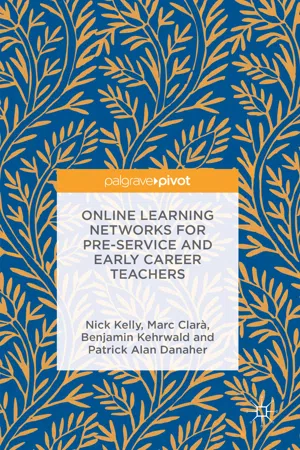Introduction
Making a start in the teaching profession is extremely challenging. A significant proportion of the literature on teacher education is devoted to cataloguing the travails of pre-service teachers (PSTs) and early career teachers (ECTs). Terms like the oft-cited ‘praxis shock’ (Ballantyne 2007; Dicke et al. 2015) or ‘reality shock’ (Veenman 1984; Correa et al. 2015), idioms like ‘sink or swim’ (Roberts et al. 2014; Sullivan and Morrison 2014), and imagery like ‘the isolation chamber known as the classroom’ (Hope 1999) have arisen in the literature in an attempt to convey the difficulties that many PSTs and ECTs face during their first years of teaching, when they often feel overwhelmed by the exigencies and the realities of their profession.
These problems experienced by teachers in their first years in the profession have important consequences. For example, there is ample consensus in the literature that teachers’ attrition reaches a peak during their first five years in the profession, with reported attrition rates of between 30% and 50% (Struyen and Vanthornout 2014) in Australia (Buchanan et al. 2013), China (Changying 2007), the UK (Purcell et al. 2005), and the USA (Ingersoll 2003; Ingersoll and Smith 2003).
The Book’s Focus and Research Questions
The reasons for teachers’ attrition during these first five years are diverse (Lindqvist et al. 2014), yet one reason that is reported frequently is the reality shock experienced by teachers when they enter the profession (Ingersoll and Smith 2003; Skaalvik and Skaalvik 2011). The high attrition rates at the beginning of teachers’ careers cause important teacher shortages in education systems, shortages that are associated with a decrease in teaching quality in schools (Richter et al. 2013) and with high economic costs for governments (Lindqvist et al. 2014). Moreover, these first years in the profession also have important emotional consequences for PSTs and ECTs, even for those who eventually stay in the profession, with high levels of burnout and emotional exhaustion during this period (Gavish and Friedman 2010; Riley et al. 2012).
As a consequence of these problems, there is consensus in the literature about the urgent need for providing improved and specific support to teachers in the first period of their careers in order to address the aforementioned reality shock and to reduce attrition rates and the associated physical and psychological illnesses among teachers (Hong
2012). It is the challenge of responding to this need that provides both the context and the motivation for this book, the golden thread running through research into teacher education that asks:
Addressing this research question is very complex. The first complexity of the question is the issue of who is to provide this support to PSTs and ECTs—in other words, who are the ‘we’ in the question? This issue is discussed more extensively in Chapter 2, but its conclusion can be advanced here: the ‘we’ that has the capacity, the legitimacy, and the duty to provide this support is what can be called ‘the greater community of teachers’, which includes all the actors who seek and benefit from an adaptable, effective, and sustainable teaching workforce. This ‘we’ is therefore extremely diverse, including novice and experienced teachers, teacher educators, school leaders, parents or caregivers, and students, among others. Note also that this ‘we’ goes beyond the rationale of single schools and takes a ‘system’ scope, whereby the whole ‘greater community of teachers’ is the ‘we’ of support for even the smallest and most isolated rural school.
From this perspective emerges the problem of how this ‘we’ can be articulated in order to provide support to novice teachers. We argue in Chapter
3 that this can be done by means of the mediation of digital technologies, by articulating ‘the greater community of teachers’ by means of online learning networks. Currently, more teachers than ever before are connected to the Internet and, through this medium, to one another. These are changes that have happened recently and rapidly. For example, smartphone usage in Australia (signifying connectedness ‘anywhere any time’) doubled in the three years following 2011 (Google and IPSOS
2013), and in 2015, at the time of writing, over three quarters of the population owned a smartphone. This technology does not in and of itself solve any problems, but instead prompts the further question:
This second research question, like the first, presents complexities that must be explored before the question can be addressed in any way. One of these complexities, discussed more extensively in Chapter 2, is the issue of what is to be understood as ‘support’ for PSTs and ECTs. Another complexity is about how ‘connectedness’ should be conceptualised. In relation to this last complexity, which is explored further in Chapter 3, we advance here some conclusions about terminology. Thus, we deploy the key terms ‘communities’ and ‘networks’ in related but distinct ways throughout the book. More specifically, we see ‘communities’ as referring to the human participants in ‘networks’, which emphasise the technical dimension of such communities. From this perspective, a particular online learning network might be claimed as supporting the kind of connectedness that is needed for the community that such a network can...
